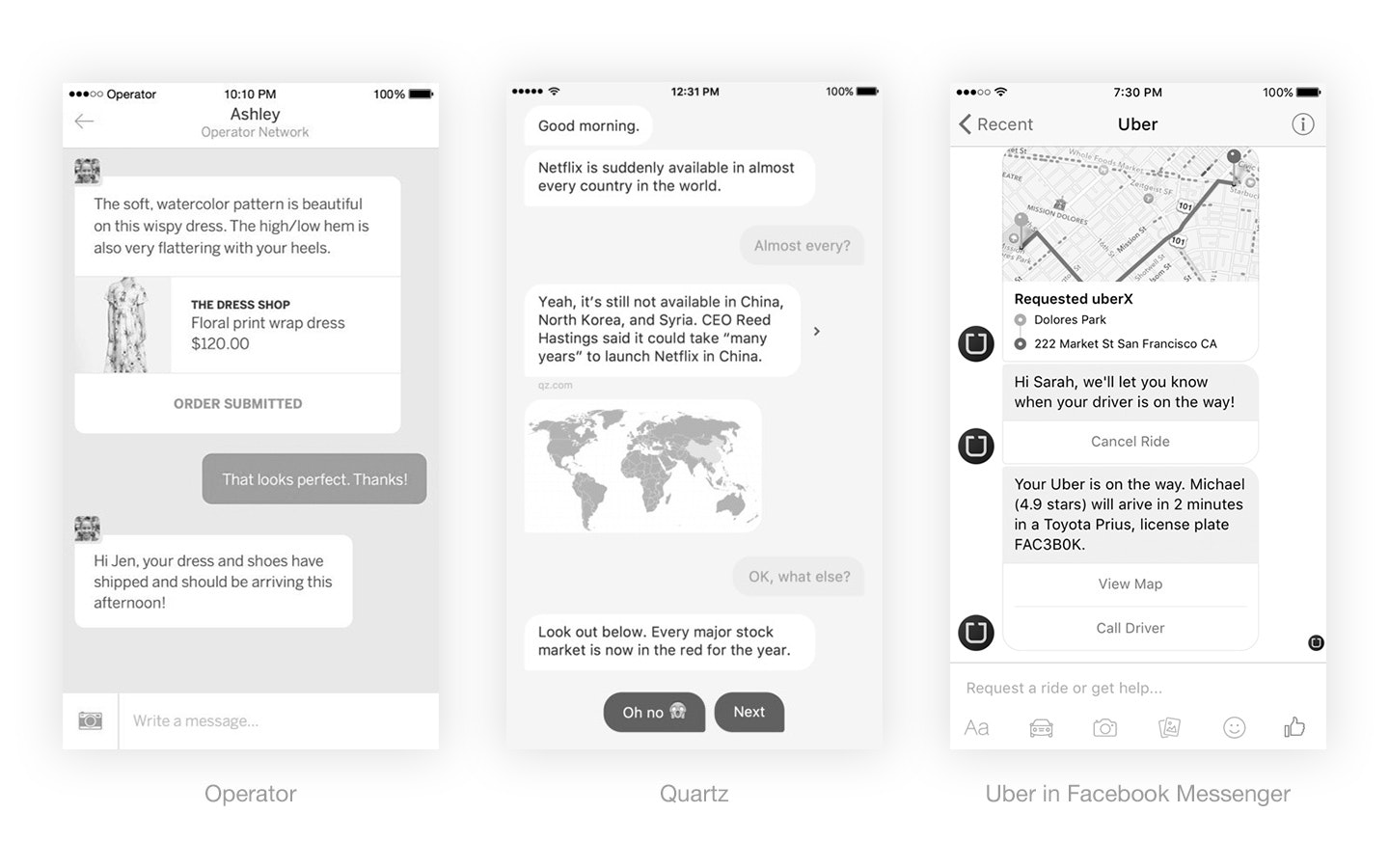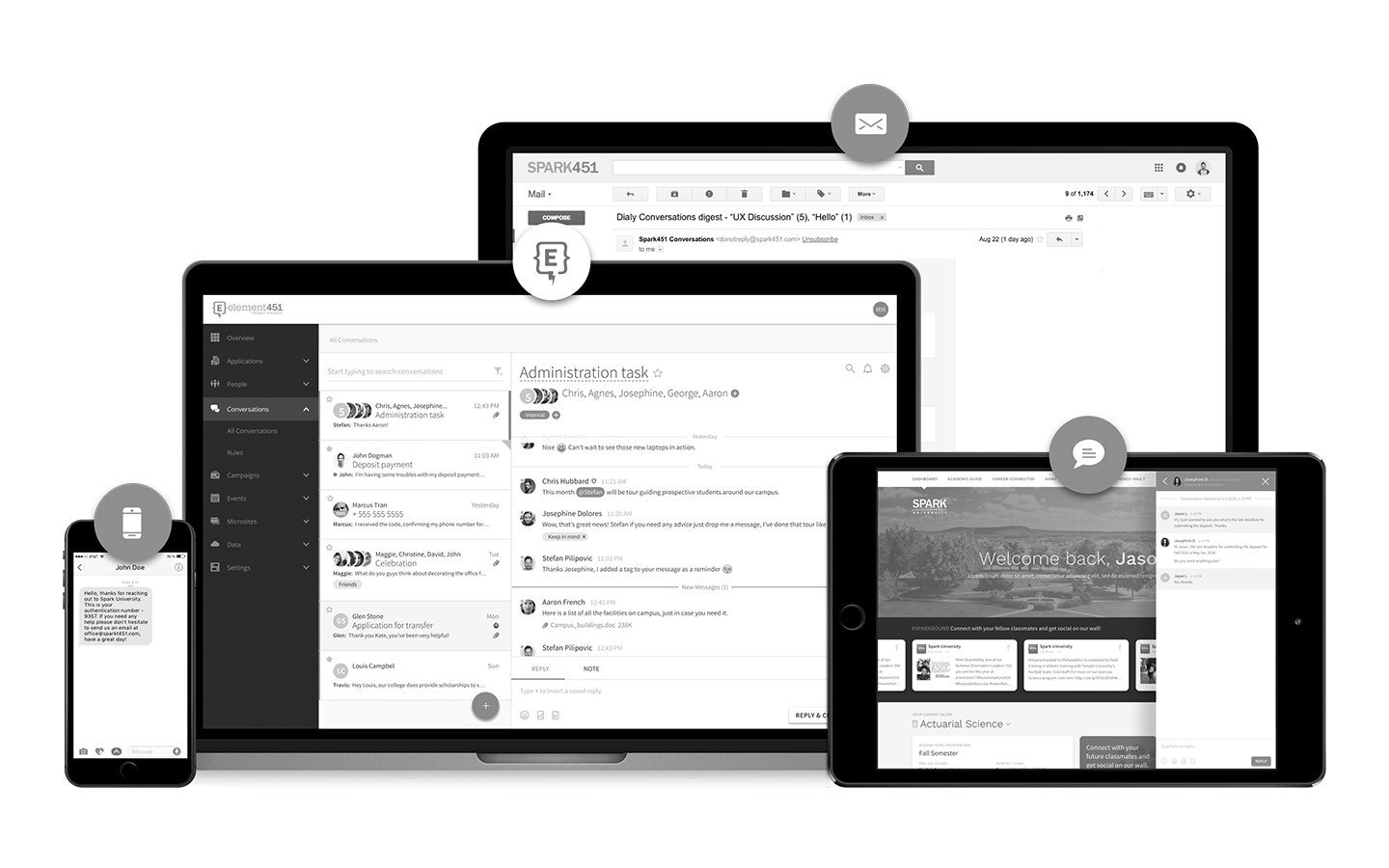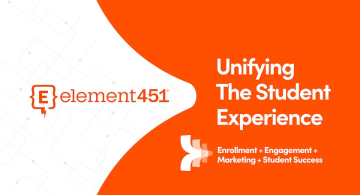What the Rise of Messaging Apps Means for Admissions Teams
Updated Mar 09, 2023
They’re changing ecommerce and customer support. How will messaging apps affect higher-ed communications?

More people now use messaging apps than social networks according to BI Intelligence. And companies are swiftly recognizing the potential for message-based interactions with customers.
Apps like Operator serve as personal shopping assistants. Type what you’re interested in and a concierge will help you find it. Open the media app Quartz to read a news snippet, complete with emojis. Tap a reply like “anything else?” to move on to the next story.

Brands are also using existing messaging platforms in addition to or in place of their own apps. Order an Uber via Facebook Messenger, for example, or shop for a pair of jeans with H&M’s chatbot on Kik.
Beyond the Cart
Messaging interfaces aren’t just for making purchases or consuming content. People will send more requests for customer support through messaging apps than social media by 2019 according to Gartner Research.
What does this mean for admissions and enrollment professionals?
Consider this: the majority of messaging app users are young and the amount of time they spend using them is significant. In a Google-Ipsos study, 52 percent of Generation Z say they spend three or more hours per day on messaging apps.
The upshot for colleges and universities is that a messaging app or presence on an existing platform is a must-have tool for communicating with prospects, applicants, and admitted students. In the near term, having messaging capabilities will positively distinguish institutions. In the long term, not having them may make a school stand out for the wrong reasons.
41%
The Center for Generational Kinetics found that 41 percent of millennials would be “truly satisfied” if they could use text messaging to connect with companies and organizations.
2019
People will send more requests for customer support through messaging apps than social media by 2019 according to Gartner Research.
The New Live Chat
Reading about chatting with prospects on your site may give you a sense of deja vu. But today’s messaging tools are much savvier than the ones you may remember from the Web 2.0 era. Users are also much more familiar with typing as a mode of conversation. This is especially true for digital native Generation Z for whom phones have always been smart.
Take Conversations451 as an example of the modern messaging app. It’s part of the Element451 higher education CRM platform. Schools can add Conversations451 messenger to their main website or an admission or admitted student sub-site. The Conversations451 messenger is mobile-friendly, so students can use it on any device.
Unlike chat apps of old with cheesy tech graphics and stock photos, the friendly, minimalistic Conversations451 messenger comfortably matches any site design. It sits in the corner, ready for students to ask a question.
When a person (typically an admissions adviser) replies, the person’s real name and their photo displays. Showing a real name and photo rather than a generic-sounding title or a made-up name or stock image is a small, but important way to set the tone. Students have finely calibrated phoniness detectors, for one. Also, it personalizes the interaction. It makes it similar to how students communicate in other messaging situations.
That initial conversation also sets the tone for a prospect's relationship with a school. For many it will be the first time they initiate communication in an active way. They aren’t using a form to request more information. They’re starting a human-to-human conversation. Providing a good experience will go a long way in building rapport.
Finding the Right Solution
Building a messaging app is cost prohibitive for most schools and likely won’t achieve the intended results. It requires creating awareness of the app and then convincing students to download it. This leaves two other main options. Use an existing platform like Facebook or WhatsApp, or add a service like Conversations451 to the communication toolbox.
The advantage of Conversations451 is that it was designed specifically for admissions teams and the way they work.

Admissions team members access and reply to messages from their Conversations451 team inbox. Conversations are manually assigned to an individual or auto-assigned based on customizable rules. If a message contains the phrase “financial aid” for example, it will be assigned to the adviser who covers that topic.
To improve efficiency, team members can save answers to frequently asked questions. They can then make small tweaks to personalize the text when they send it to a student.
Having conversations in a shared inbox makes it easier for teams to ensure that every question is being addressed. Notes can even be added to make sure everyone’s on the same page. The historical record is also a treasure trove.
Are many students mentioning that a particular page of the website is confusing? Are they saying it’s difficult to find a certain piece of information in materials they’ve received? Is there a step in the application process that’s unclear or problematic?
Feedback logs motivate and provide rationales for making changes that improve admissions communications and processes.

How to Reach Gen Z With True Content Personalization
Cut through the noise and connect more deeply with Gen Z students by combining content with context. We'll show you how.
Download the White Paper

About Element451
Boost enrollment, improve engagement, and support students with an AI workforce built for higher ed. Element451 makes personalization scalable and success repeatable.
Categories
New Blog Posts

The Definitive Guide
AI in Higher Education
Bridge the gap between the latest tech advancements and your institution's success.
Useful Links

Talk With Us
Element451 is the only AI Workforce Platform for higher education. Our friendly experts are here to help you explore how Element451 can improve outcomes for your school.
Get a Demo






